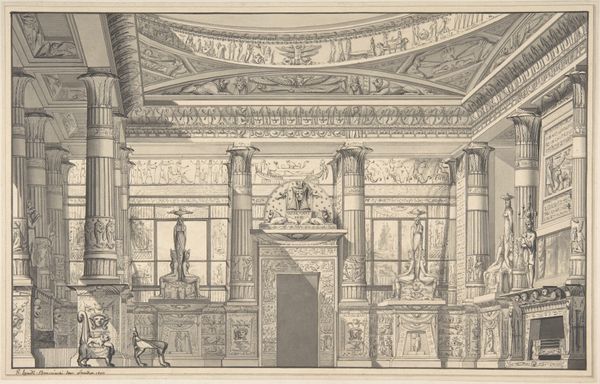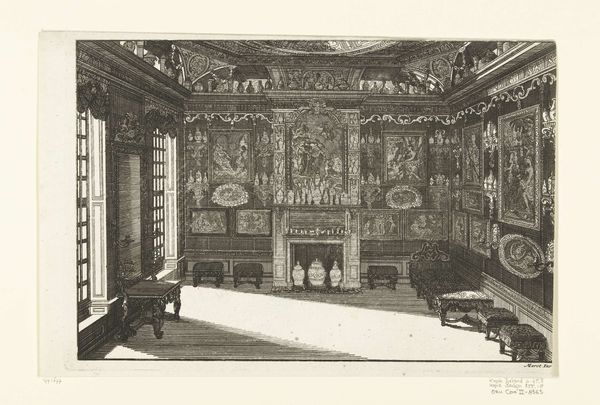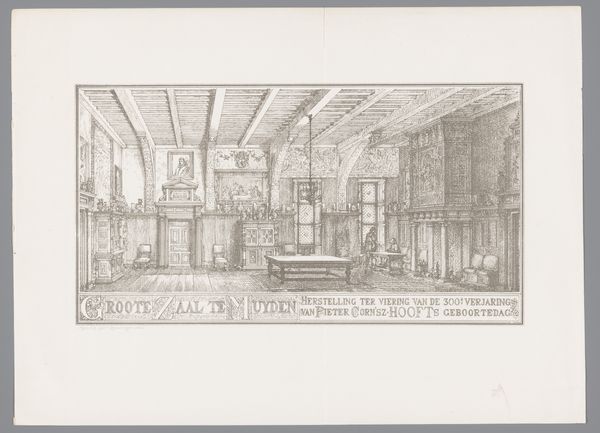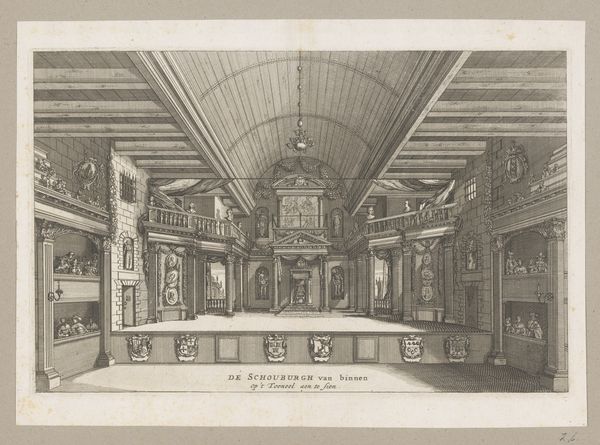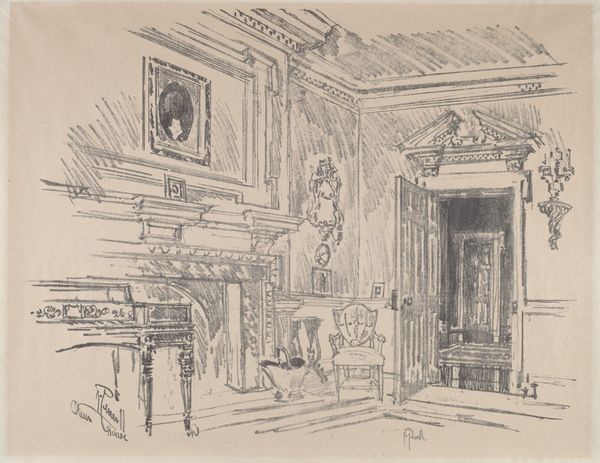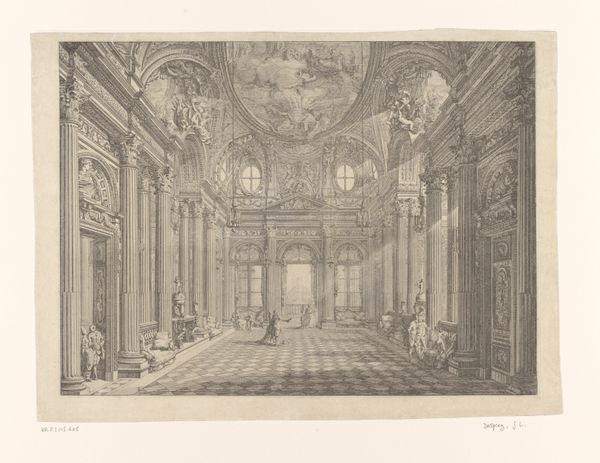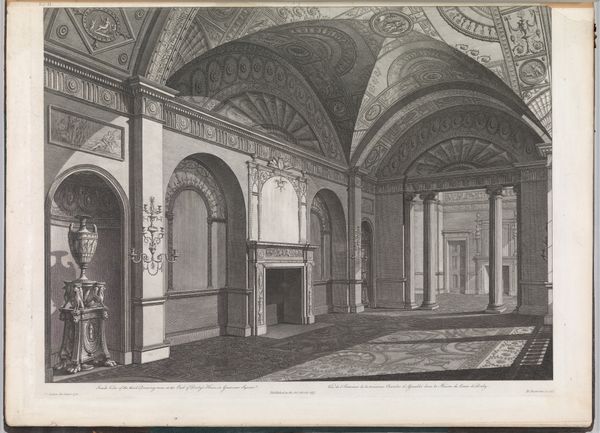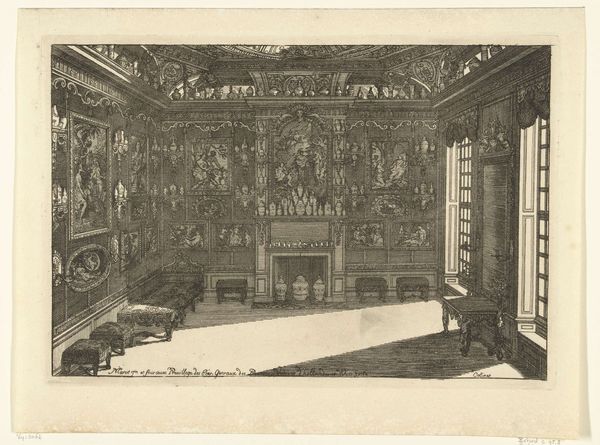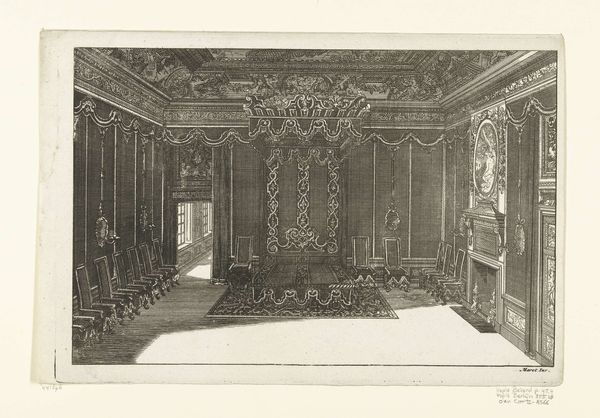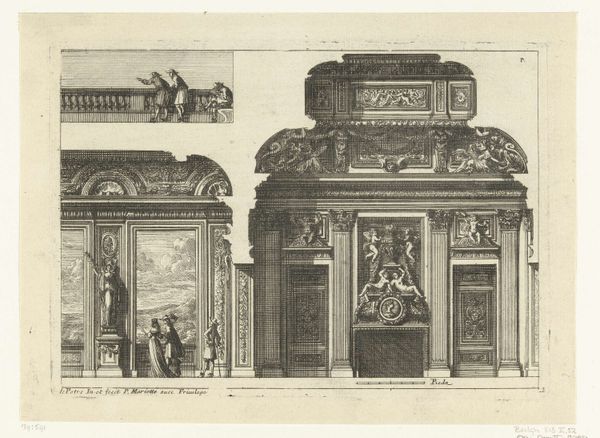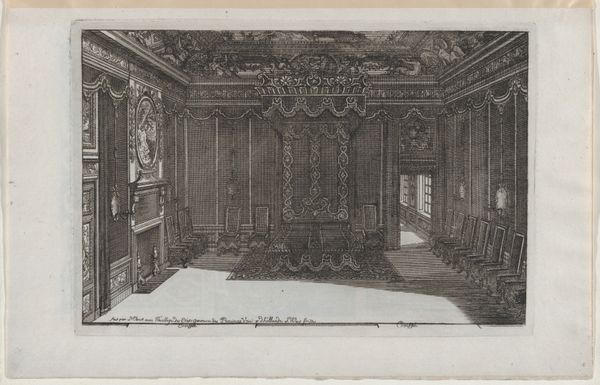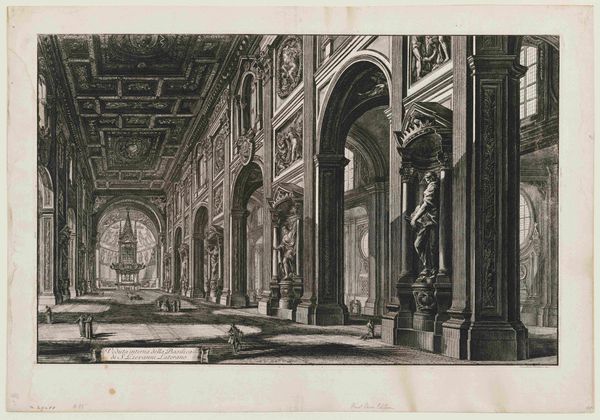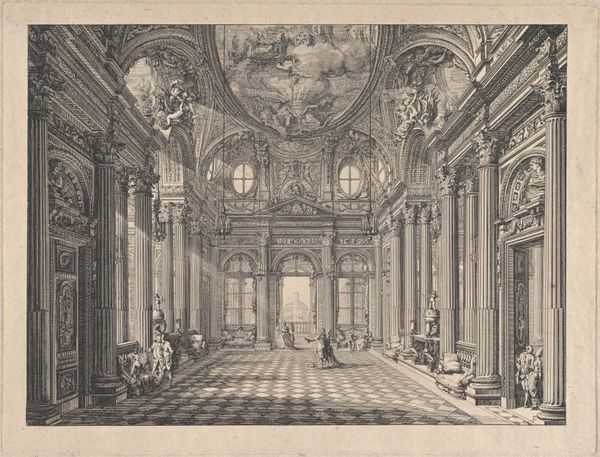
Design for a Stage Set?:Interior of a Stateroom with Four Tables Displaying Urns and Tabernacles. 1790 - 1849
0:00
0:00
drawing, print, pencil, architecture
#
drawing
#
neoclacissism
# print
#
pencil sketch
#
pencil
#
architecture
Dimensions: sheet: 9 3/8 x 12 1/2 in. (23.8 x 31.8 cm)
Copyright: Public Domain
Editor: So, this pencil drawing is called "Design for a Stage Set?: Interior of a Stateroom with Four Tables Displaying Urns and Tabernacles," created sometime between 1790 and 1849 by Alessandro Sanquirico. It feels so grand and meticulously planned, but also quite ghostly in its monochrome rendering. What stands out to you most about this piece? Curator: The initial feel hits me the same – it's like peering into a beautifully haunted memory. It embodies Neoclassical ideals, with its perfect symmetry and Roman architectural details, rendered through simple line strokes. Notice the stark, stage-like presentation. Makes you wonder, doesn’t it, about the theater of power, of display... Maybe this space is not simply a room, but a presentation of power? What kind of atmosphere do you get from it? Editor: A ceremonial atmosphere. I can imagine very theatrical displays of authority. It’s like the architecture is speaking louder than any human interaction could. It looks hyper-real in the sense that the visual language of power, order, and formality have precedence over how the space will feel to the people who are present. It looks intimidating, like an embodiment of the all-seeing panopticon. Curator: Precisely. It seems he's almost drafting an emotion more than a structure; a vision built for effect, which invites the question, whose effect? Perhaps the artist wasn’t merely drafting designs, but rather the stage for political theatre to play out upon... the power and the symbolism. Editor: I hadn't considered the possible implications within its political theater! Thinking about it that way definitely shifts the focus of what's trying to be achieved in the room. Curator: Exactly. It really pushes the narrative from being purely about aesthetics towards an idea about controlling narratives, itself, what do you make of that perspective? I always come back to finding some more context on the French Revolution… that is perhaps worth further inquiry?
Comments
No comments
Be the first to comment and join the conversation on the ultimate creative platform.
